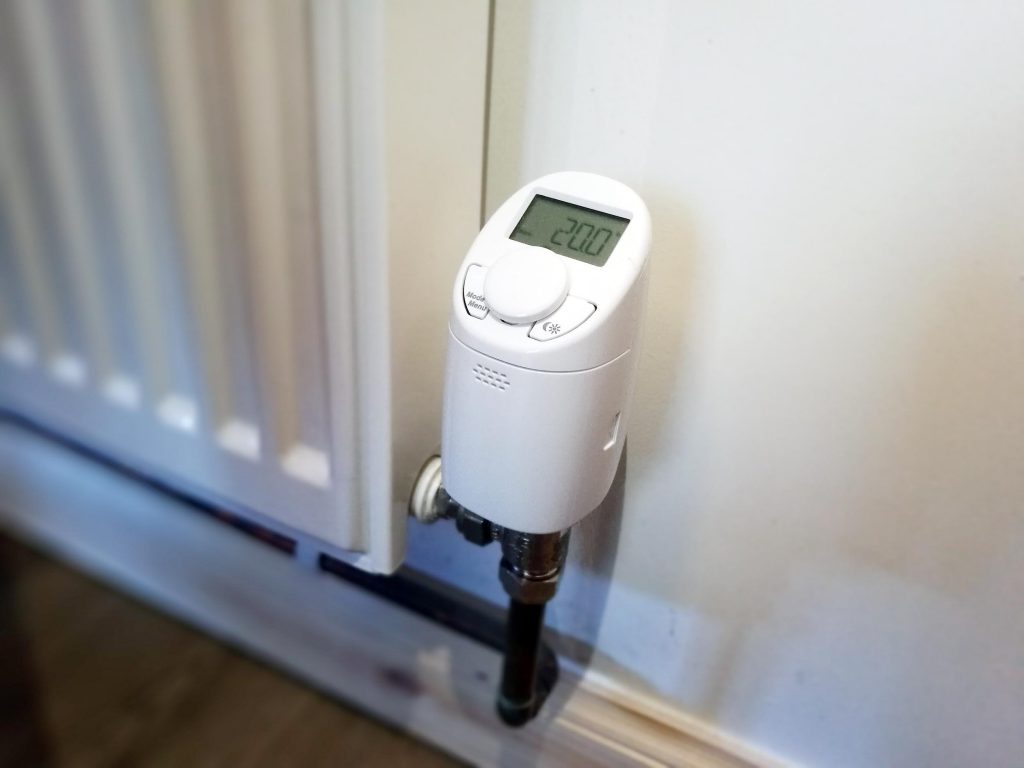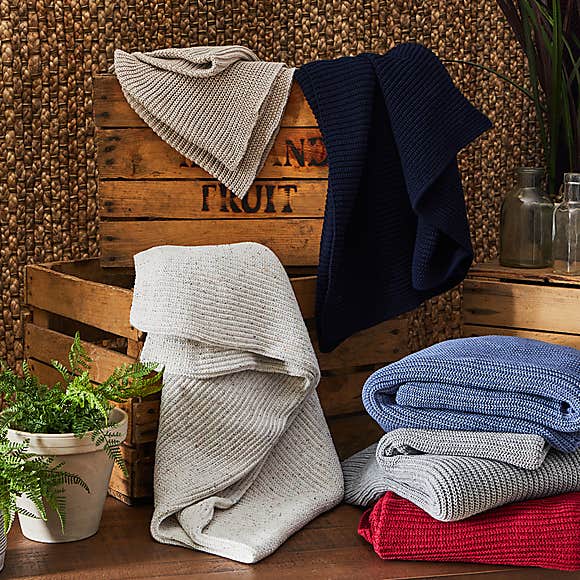I know, it seems early to be talking about keeping warm – it is only September, but there is a definitely turn in the air. I think there is anyway, and if you’re nesh like me – you feel the cold and hate it! So maybe now is the time to think about how you are going to keep the house warm this winter – so here are my five eco ways to stay warm!
This post contains affiliate links to products that I have used or recommend. I have made these as unobtrusive as possible. You can learn more about what these do here.
Take control of those radiators
First things first – how you heat your home. It should come no surprise that radiators make it to number one on my list of five eco way to stay warm. There will be a point when you have to turn the heating on – so how do you make that as environmentally friendly as possible?
Firstly – how hot do you actually need it? According to the World Health Organization:
- > 24°C – cardiovascular risk
- 18-21°C – comfortable temperature
- 18°C – minimum for comfort
- 12-16°C – respiratory risk
- <12°C – cardiovascular risk
- 9°C – hypothermia risk
If you have a baby, the Lullaby Trust recommends the room be between 16° and 20°. We have our thermostat set for 18°, and we keep that in Little Miss Greener’s room so that her room see’s least fluctuation.
If you’ve got a hot house, turning the temperature down will not only save some energy (which is better for the environment), but also some money too! According to Ovo Energy, turning the thermostat down 2° from 20° to 18° can save you approximately £139 on your annual gas bill! That’s not bad.
We, like most people don’t have the heating on all day. We know our working hours so while we’re out the house, we drop the house temperature down to 14°. Again, using less energy! This is the first, most easy thing you can do with your heating. The second thing?
Now we get fancy.
Even though this is number one of five eco ways to keep warm, it’s sort of two. Your home thermostat is the master control for the whole house. You can save more energy by zoning your house.
What is zoning?
Most radiators are fitted with valves. Open the valve more, you have a hotter radiator, close it you turn the radiator off, meaning you can have hotter and colder rooms. Zoning is creating areas in your house that you have finer control over the temperature, your kitchen might be warmer because of all the appliances so you can turn that radiator down (incidentally, even though this post is about staying warm – if you’re not using a room, turn that radiator right down to save energy and money!). This is a super basic version of zoning, you can get more advanced and have each radiator controlled independently. This can be done with clever smart thermostats that can be coupled with smart radiator valves, that sense you coming home and turn the heating on, or monitor the temperature 12 times a nanosecond and you control from your phone. These, although they are smart and can save you money with that fine control, are quite expensive.
The cheaper option
We wanted to have some finer control over our heating but didn’t want to fork out over £100 to do it. We figured, we don’t use downstairs at night so we can turn that heating down after a certain time. After some research, we found some not so smart radiator valves with timers that would enable us to do just that! Like our main thermostat, we can set temperatures and the times we want that radiator to achieve that temperature.

We found the Eqiva Model M Thermostatic Radiator Valve (TRV) ideal – they do other models based on your valve configuration. These are simple replacements to your standard twisty radiator valve that automatically adjust the valve with a battery powered motor. They’re super quiet, and easy to fit and use! We might upgrade one day – but for now, for less that £50 we have zoned control that reduces our energy consumption and save us money!
Stop heat from getting out!
Remember my five eco ways to stay cool article? Those thermal blinds and curtains will be great in winter too! Not only will they keep the heat out, they’ll help keep the heat in too. Even the best windows could be seeping out heat, especially as it cools off more over night. So shut those curtains and keep that warm in! So here’s the list from the keeping cool article again:
- Close curtains/blinds/shutters
- Upgrade to thermal curtains or thermal liners
- Upgrade to thermal blinds or honeycomb blinds
- External shading
External shading? Before you set up your external shading for summer cooling – think about where the winter sun will be too. You want to still allow the lower winter sun in to heat your home. If you use plants, something that loses it’s leaves as it cools of is ideal! Which brings me nicely to my next point.
Make the most of the sun
Yup, pretty much the opposite of summer, let that light flood into your home so you get that solar gain. Solar gain is the heat gain caused by the sun heating the air and structure of your home. All your walls are effectively giant storage heaters that will soak up that energy and release it gradually as the room cools. So during the day, let it in! and as it passes close the curtains.
Get cosy!
This is my favourite of my five eco ways to keep warm. Shut the door, cuddle up and get under a blanket together. The easiest and cheapest ways to keep warm have been around forever. Wrapping up in warm clothes or having a hot drink are all tried and tested. Shutting doors creates smaller spaces to heat, and you can use the heat that you emanate!
A human gives off roughly the same energy as a 100 watt traditional lightbulb – toasty. You can pretty effectively heat a small space, or wrap yourself in a blanket and stop it getting away from you or those you want to cuddle up to. All you need now is a hot drink and a good film.
Stop heat from escaping through the floor
We often talk about wall and loft/roof insulation – but what often gets missed is the floor. I know this is sort of stop heat getting out but this one is really overlooked and it gets me to five (it is Five eco ways to keep warm after all). Believe it or not up to 10% of heat can be lost through uninsulated floors and concrete slabs. This is specially a problem with older houses (like our 1967 terrace!). Underneath us is a concrete slab. Underneath that, good old terra firma. Some places you might have a cellar which will do the same.
This can suck out the heat from your rooms.you can insulate your floors which is worth doing if you can – unfortunately this wasn’t really an option for us! What else can you do? This carpets will help, and the good old rug. Rugs weren’t about how a room looks, or created areas in a space. They were for keeping warm! Dressing a room up with a rug will add a bit of insulation underfoot that might be enough to take the edge off that cold.
How do you like to keep warm? Let us know in the comments below!


